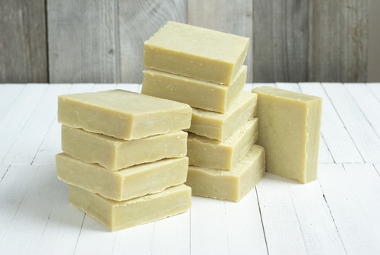there are several separation methods used to separate the components of a mixture. The process used will depend on the type of component and the type of mixture to be separated. In this text we will talk about magnetic separation, used to separate components of a solid mixture, and over simple distillation and evaporation, used for homogeneous mixtures between solids and liquids.
magnetic separation
THE magnetic separation it is a process of separation of solid mixtures where one of the components is a metal attracted by a magnet. For example, in a mixture of table salt and shavings. iron, the separation will occur by the approach of a magnet, causing the iron to be attracted, separating it from the salt.

This process is used, on a larger scale, in garbage separation and in junkyards, with the use of a electromagnet — a powerful magnet generated by the electric current magnetization.
Read too: Types of Mixtures
simple distillation
THE simple distillation is a process used to separate the components of a mixture formed by a miscible solid and liquid, that is, that mix together forming a single phase.
The basic principle of this process is the evaporation of liquid by heating and then your condensation, making it liquid again, but now separated from the solid component.
See too: Evaporation and condensation

Simple distillation has been used for a long time in production of alcoholic beverages, specifically the distilled, such as vodka, cachaça, whiskey, among others. The process is used to obtain a drink with a higher degree of purity and a higher alcohol content.
The following is a sample of the apparatus used in simple distillation in laboratories:

Bunsen burner (or other heating equipment): used to heat the mixture to boiling liquid.
Tripod: used to support the distillation flask and asbestos screen.
Asbestos mesh: used to absorb heat and distribute it evenly to the balloon.
distillation flask: used to place the mixture to be distilled. This balloon has an upper and a lateral exit.
Thermometer: equipment coupled to the upper outlet of the distillation flask and used to check the temperature during the process.
Condenser: used to condense steam from heating. This equipment is connected to the side outlet of the distillation flask. It has an inlet and an outlet for water, used to cool the steam entering the condenser.
Erlenmeyer (or other container): used to collect the liquid that comes out after condensation.
Universal support with claw: used to support the balloon and condenser.
Do not stop now... There's more after the advertising ;)
→ How does simple distillation occur?
The simple distillation process is used when desired separate a homogeneous mixture formed by a liquid and a solid, for example: an aqueous solution of sulfate copper. We will use this mixture to describe how simple distillation takes place.
With the equipment assembled and with the mixture already inside the distillation flask, the heating turning on the Bunsen burner until liquid, in this case water, starts to boiling (indicated by the temperature reading on the thermometer).
O Steam that is being formed will be directed to the condenser through the side exit of the balloon. Upon entering the condenser, this vapor begins to decrease in temperature and return to a liquid state, forming droplets on the glass wall of the device.
The water, totally separated from the solid and already in the liquid state, leaves the condenser, being collected in the Erlenmeyer placed at the end of the device. O copper sulfate, solid used in our example, stays in the balloon of distillation.
This method, in a simpler way, but on a larger scale, is widely used in the process of thermal water desalination, in which the salt water is placed in tanks covered by a transparent material To receive Sun light.
With the incidence of sunlight, the mixture is heated and the water starts to evaporate. The water vapor formed is condensed when it comes in contact with the top of the tank and is collected, now without the presence of salt.
Read too: Mixture and Substance Graphs
Evaporation

THE evaporation is a mixture separation process similar to simple distillation, ie used for mixtures homogeneous between solids and liquids, however, in this case, the liquid is not collected by a condenser during the process. Therefore, evaporation is indicated when one is interested only in the solid component of the mixture.
In evaporation, the mixture is heated until the liquid evaporates completely, leaving only the solid at the end of the process. This method is used in salines to the obtaining of sodium chloride, in which the salt water is placed in shallow tanks for evaporation and the salt is separated from the water, being deposited in the tank.
by Victor Ricardo
Chemistry teacher
Would you like to reference this text in a school or academic work? Look:
FERREIRA, Victor Ricardo. "Magnetic separation, simple distillation and evaporation"; Brazil School. Available in: https://brasilescola.uol.com.br/quimica/separacao-destilacao-e-evaporacao.htm. Accessed on June 28, 2021.


